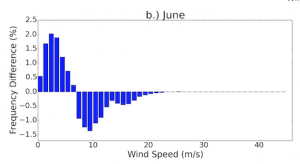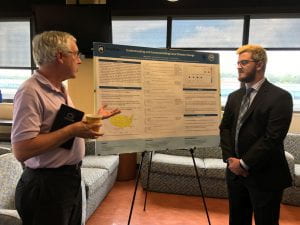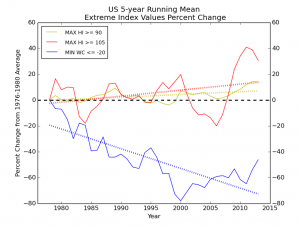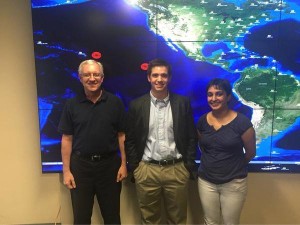WEATHER RISK
The role that weather plays as a source of financial and operational risk for businesses, markets and other institutions.
Graduate Student Research:
CSWCR sponsored Amanda Walker during her graduate studies at Penn State. For her research, she designed a new fiscally-based scale for storm surge risk during hurricanes. This research was published in Monthly Weather Review. Ms. Walker is currently a Technical Meteorologist at Athenium Analytics.
CSWCR Director David Titley also advised School of International Affairs graduate student Divya Sundar. Her research quantified external impacts on climate policy and national security.
Undergraduate Student Research:
Seasonal Forecast Verification: Dr. David Titley and Dr. Jon Nese used a Gladys Snyder grant to fund undergraduate research aimed at verifying commercial and governmental seasonal forecast products.
Safe Side/Dirty Side: Millennium Scholar Katherine Seikel has begun her research project about better communicating risks from hurricanes based on output from existing ensemble forecast models.
Participation in the National Science Foundation’s (NSF) Research Experiences for Undergraduates (REU):
2018
Rafal Ogorek, a University of Michigan senior, joined CSWCR in summer 2018 to look at changes in the deep steering flow along the Southeast US coastline during North Atlantic hurricane season. His results showed that while the steering flow is weaker in recent years, the changes are largely confined to the start and end of the season. Mr. Ogorek presented this research at the American Meteorological Society Annual Meeting. This paper has also been submitted for publication Rafal Ogorek is currently pursuing graduate studies at the University of Michigan.
2017
Jacob Muller, a University of Oklahoma senior, developed an index for use in communicating anomalous temperatures in a novel way. The “Seems Like Index” links temperatures during cold snaps or heat waves to normal temperatures in a colder or warmer month (e.g. “This cold May day seems like a normal day in late February”). Mr. Muller continued his research into his senior year and presented at both the 17th Annual Student Conference and 31st Conference on Climate Variability and Change at the 98th Annual Meeting of the American Meteorological Society in January 2018. He is currently enrolled as a graduate student at Texas A & M.
2016
Austin Jordan, a Penn State senior in the Weather Risk option, looked at changes in extreme heat indices and wind chills. He found that while there is a modest increase in extreme heat indices across the US, there is a larger decrease in dangerous wind chills over the climate record. Mr. Jordan is currently a Utility Analyst at the University of Pittsburgh.
2015
Penn State Senior Jeff Schmidt, along with David Titley and Sonya Miller in front of the new map wall in the Joel N. Myers Weather Center. Mr. Schmidt worked on developing a new Jet Stream Index to try to characterize long-term changes in the Northern Hemisphere Jet Stream. He was co-advised by Dr. Titley, Dr. George Young, and Ms. Miller. He is currently a CAT Exposure & Risk Management Services Consultant at Guy Carpenter.





